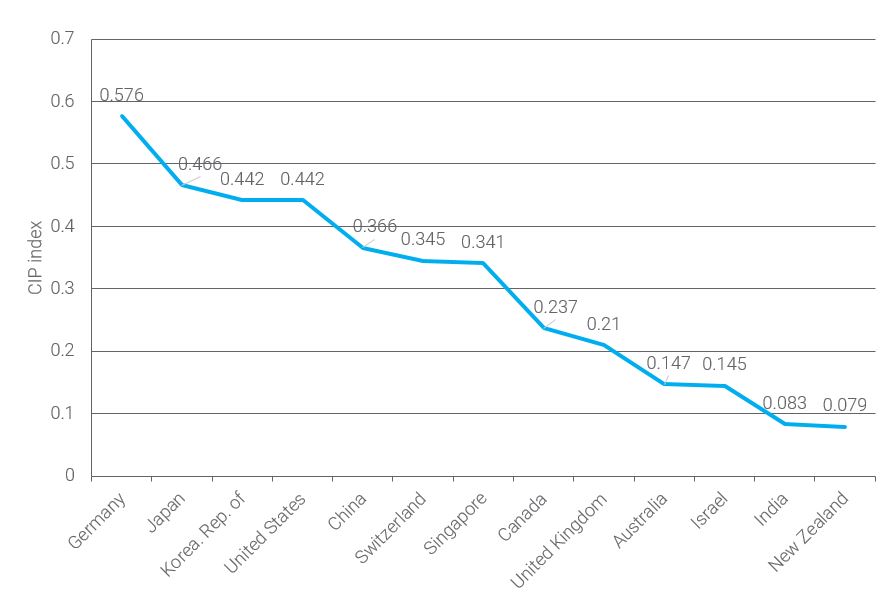Mahatma Gandhi once stated, ‘The future depends on what we do in the present.’ Obvious, yet so profound.
Its connotations have far reaching implications for how we think about our present. It mandates deliberation in planning and purpose in action. Such thinking, that likely shepherded Gandhi to achieve the major task of delivering India from British colonialism – while deliberating over his every action (and inaction).
His philosophy and attitude bears relevance to our manufacturing industry development – and arguably every sphere of activity under the sun.
So what is the long-term future we want for our companies, businesses, staff, or industry?
Let’s start with where we’re at right now
The United Nations Industrial Development Organisation (UNIDO) recently assessed and benchmarked industrial competitiveness of countries through its Competitive Industrial Performance (CIP) index. Building on a concept of competitiveness that emphasises countries’ manufacturing development, and implying that industrial competitiveness is multidimensional.
Industrial competitiveness is defined as the capacity of countries to increase their presence in international and domestic markets. While developing industrial sectors and activities with higher value added and technological content. Out of 141 countries, NZ ranks 45th – outperformed by selective countries in the CIP index and their corresponding rankings. In fact, we missed the top quintile completely – coming in just below it.
Let’s start with where we’re at right now
The United Nations Industrial Development Organisation (UNIDO) recently assessed and benchmarked industrial competitiveness of countries through its Competitive Industrial Performance (CIP) index. Building on a concept of competitiveness that emphasises countries’ manufacturing development, and implying that industrial competitiveness is multidimensional.
Industrial competitiveness is defined as the capacity of countries to increase their presence in international and domestic markets. While developing industrial sectors and activities with higher value added and technological content. Out of 141 countries, NZ ranks 45th – outperformed by selective countries in the CIP index and their corresponding rankings. In fact, we missed the top quintile completely – coming in just below it.
UNIDO’s Industrial Development Report 2016 makes it clear that manufacturing remains the main driving force of economic growth, largely attributed to its higher productivity and scope for innovation.
Over the past few decades, the majority of global manufacturing has steadily shifted from West to East and from North to South. And since the beginning of the century – rapid growth in manufacturing value add has been a major source of poverty reduction in many developing and emerging industrial economies through employment creation and income generation. With statistics suggesting they’ve still got considerable capacity for manufacturing growth and technological progress to come.
The report also highlights that most industrialised countries have lost ground since their 2010 rankings – including New Zealand, who dropped from 43 to 45 in 2013.
Clearly, we’ve got work to do as a nation, and more specifically as an industry.


Taking ownership in self-development
Countries (and by inference industries) can learn and become more industrially competitive in international markets if they adopt the strategy to:
- Develop their technological capabilities,
- Expand their production capacity, and
- Invest in their infrastructure.
It’s a strategy that we must mirror ourselves if we’re to consider what we’re doing now to create the future our industry wants. At HERA, we’ve long advocated for this need. The recent closure of some of our member companies brought this message too close to home. Engineering companies must step up to the plate and take ownership of their role in their own development.
Align innovation with business strategy
Firms need to actively acknowledge the important role of innovation in their company’s growth and integrate it into their strategy. They need to view their technological capabilities, production capacity and infrastructure investment decisions through the lens of innovation and carve out their long-term vision from it.
Continuously question ‘what’s our industry’s next?’
Industry disruption will continue to be relevant – with for example 3D printing and the impending invasion of automation and robotics through the Industry 4.0 wave currently disrupting our manufacturing industry. We in the least must embrace it, if not – consider disrupting it. But for this to happen, a fundamental shift in mindset is most critical. One of innovation, not operation. One that’s prevalent among the higher ranked CIP index countries, and one we should aspire to.
How can HERA help in your development?
Our Industry Development team has a mandate to foster the development of an innovative mindset in industry. Achieving this through motivation, insight and capability assessment so industry can forge its own development pathway forward.
In this context, HERA’s role is best likened to that of a coach or a beacon identifying the pathway of development that companies need to tread on their way to success. We’re here to actively help facilitate that growth.
We can also assist by identifying worthwhile business opportunities, networking and funding sources – depending on member interest and capability levels. We’ve committed to gain a better understanding of our industry and its development needs through a business research program starting in 2018. It’ll analyse business practices, network densities and company profiles to deliver insights on needed actions constantly challenging firms to crystallise their vision for their future.
What does all this mean for the future of our heavy engineering industry?
Increasing industrial competitiveness requires selective policy interventions, through which comparative advantages are exploited while new competitive advantages are created. With the swearing in of our new central left policy government we have much to be excited about with an expectant shift in focus towards the development of sustainable technologies and a government ear sympathetic to our funding cry for industrial R&D activities.
The heavy engineering industry has significant potential to grow even if perceived to be a lack-lustre, low-medium tech, traditional industry. Our Asian and European counterparts demonstrate through their leaps and strides in manufacturing growth with their deliberate focus and aggressive stance.
‘The best way to predict your future is to create it,’ Abraham Lincoln.
We believe our business research program will be a perfect opportunity for our heavy engineering companies to take steps towards creating their future by investing in business development skills. We urge CEOs to start with minor investments in themselves or their staff to upskill in business acumen such as commercialisation and entrepreneurship.
We’re excited that our business research program collaborator and research lead Professor Kenneth Husted brings this expertise to the program. We encourage you to join this work as it kicks off.
We’re uniquely poised to make an impact on the next manufacturing industrial revolution. Let’s take ownership in the creation of our industrial legacy.
For further discussion, please contact our Industry Development Manager, Dr Boaz Habib.
